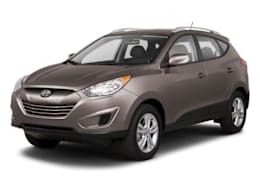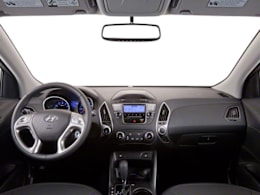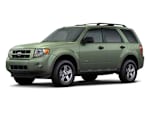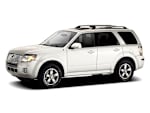The redesigned-for-2016 Tucson shares only its name with the previous generation. Now it's more inline with the larger Santa Fe Sport and Santa Fe SUVs. The overall package is more competitive against the segment leaders. The base version has a 2.0-liter four-cylinder engine, linked to a six-speed automatic. This version is rather slow and returned 24 mpg overall. More expensive trims get a 1.6-liter turbo four-cylinder that uses a seven-speed automated manual transmission. This quieter and quicker setup returned 26 mpg overall, but it suffers from a vibration at very low speed, such as in parking maneuvers. Otherwise, ride comfort is pliant and composed, handling is responsive and secure, and the cabin is quiet. Controls are easy to use, and the rear seat is roomy. The Tucson has available lane departure warning, blind-spot warning, and forward collision warning with automatic emergency braking. A new 181-hp, 2.4-liter four-cylinder engine mated to a six-speed automatic arrived in 2018. In our tests, it was faster than the 2.0-liter but returned only 22 mpg overall. The Tucson got a freshening for 2019 which included replacing the previous top-level engine choice (1.6-liter turbo mated to a clunky seven-speed dual-clutch automatic transmission) with a 2.4-liter and a regular automatic. A few interior touches, such as an electronic parking brake, were introduced as well.




















































